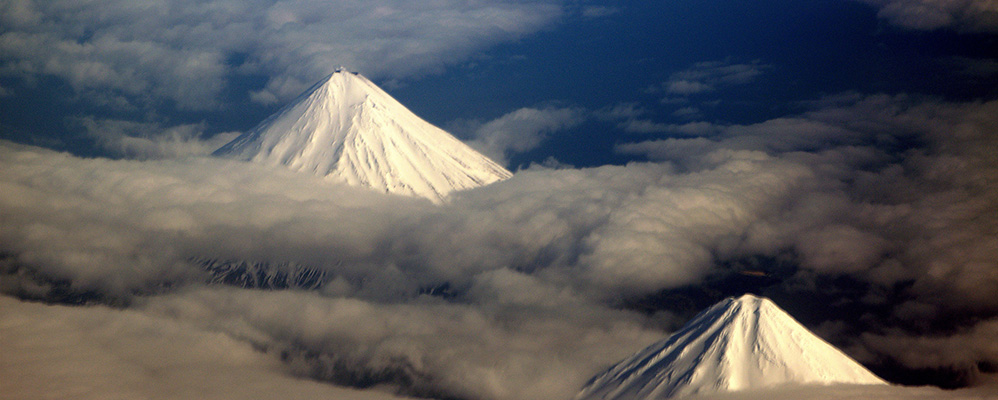 The peaks of Cleveland and Carlisle volcanoes in the Aleutian Islands after a small steam event in 2012. ©U.S. Geological Survey, 2012.
The peaks of Cleveland and Carlisle volcanoes in the Aleutian Islands after a small steam event in 2012. ©U.S. Geological Survey, 2012.
Less than two years ago, experts and news outlets were commemorating the 35-year anniversary of the eruption of Mount St. Helens. While many of those accounts rightfully focused on how far volcanology has come, there’s still much to be done when it comes to safely monitoring the nation’s volcanoes.
That is the impetus behind a bill introduced last month by three members of the Senate Committee on Energy and Natural Resources. The bill, called the National Volcano Early Warning and Monitoring System Act, would combine existing U.S. volcano observatories into one system and create a Volcano Watch Office that would supply around-the-clock situational awarness.
“Volcano science, forecasts, and warnings are critical to volcano preparedness in the Pacific Northwest,” Washington State Senator Marie Cantwell—who coauthored the bill with Senators Lisa Murkowski of Alaska and Mazie Hirono of Hawaii—said in news release. “Washington State has five high-threat volcanoes in the Cascade Range, yet there is a gap in monitoring and understanding this volcanic activity. My bill seeks to ensure we have the science and technology needed to help keep communities safe. We need science to guide us.”
The bill would also create a national volcano data center, a grant program to support volcano monitoring and technology research, and funds to modernize existing equipment and technology.
The release of the bill—a version of which had been introduced in 2015—corresponded roughly with an eruption of Alaska’s Bogoslof volcano in December. The volcano, located in the Aleutian Islands, continues to erupt periodically and create ash clouds.
While Bogoslof is remote, there are nearly 170 active volcanoes in the United States, according to the U.S. Geological Survey’s Volcano Hazards Program. About half of those—including Glacier Peak in Washington, Kilauea in Hawaii, and Yellowstone in Wyoming—are considered dangerous to nearby communities.
Although the Bogoslof eruption didn’t garner a huge amount of press, it still could provide momentum for the volcano monitoring act. That’s important experts say, because as events like Mount St. Helens begin to recede from our collective memory, so does the understanding of our risk.
“Most people in the U.S. perceive volcanic eruptions as rare, and [believe] that we’d be able to get advance notice because of the advance in science and instrumentation,” Estelle Chaussard, a SUNY-Buffalo volcanology and geophysics professor, told The Atlantic. “This kind of assumption is very dangerous, because most of our volcanoes are not as intensively monitored as we think they are or as they should be.”
Jolie Breeden is the lead editor and science communicator for Natural Hazards Center publications. She writes and edits for Research Counts; the Quick Response, Mitigation Matters, Public Health, and Weather Ready Research Award report series; as well as for special projects and publications. Breeden graduated summa cum laude from the University of Colorado Boulder with a bachelor’s degree in journalism.